The X-Ray Facility houses a dual-microsource Bruker D8 Venture κ-axis diffractometer (MoKα & CuKα) with large-area 'Photon III' CMOS X-ray detector (upgraded in March 2024), and low-temperature apparatus. The equipment was obtained with a grant from the MRI program of the National Science Foundation (award CHE-1625732).
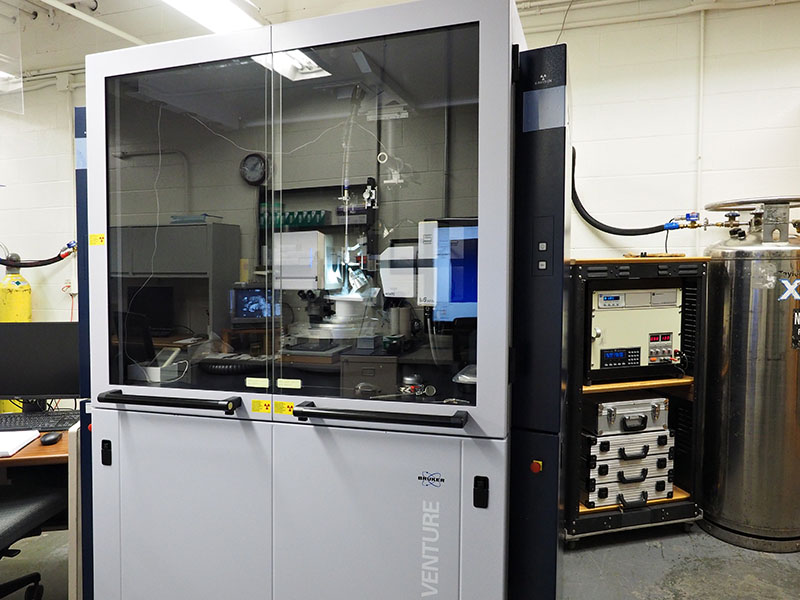
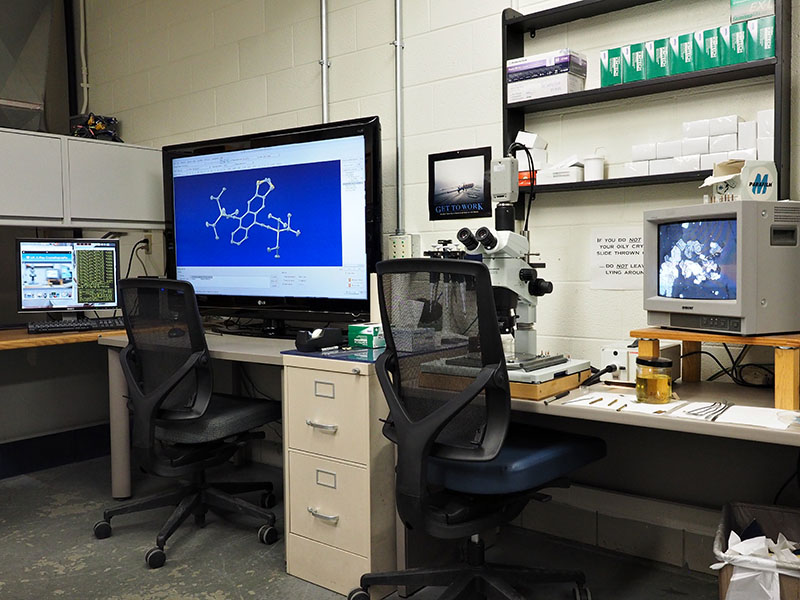
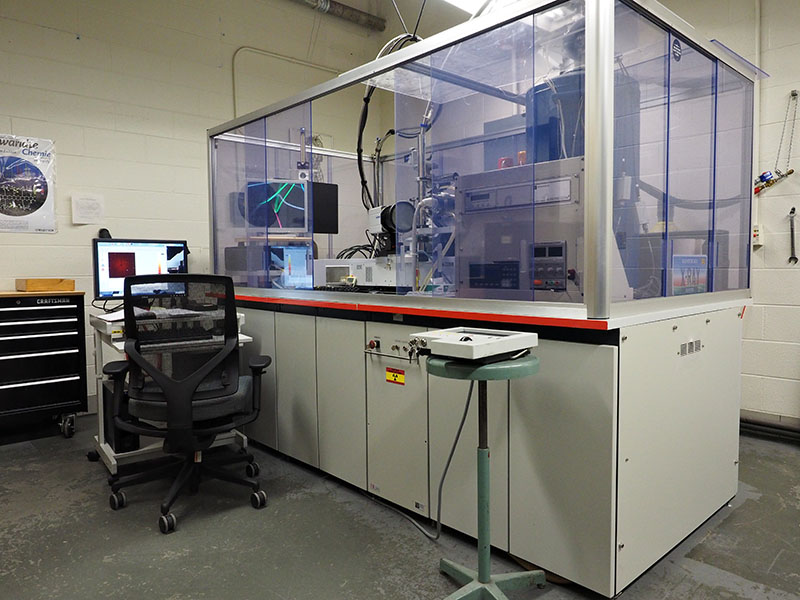
The low-temperature attachments deliver a constant, low-velocity flow of cold nitrogen gas over the crystal. Low temperature has many benefits for X-ray structure determination, including better quality data in less time than for room-temperature work, and the ability to handle highly reactive compounds with minimal fuss. We typically collect data at about 100K, but occasionally destructive phase transitions necessitate higher temperatures (83-500K is possible).
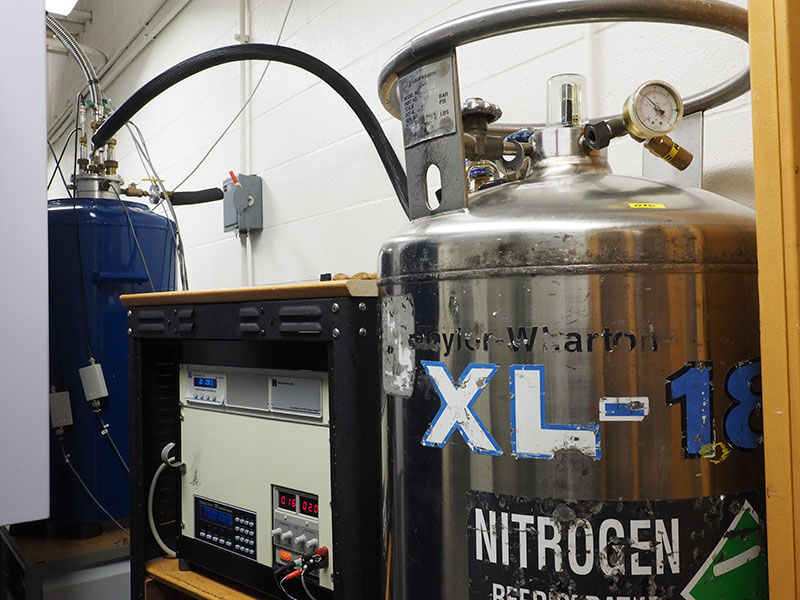
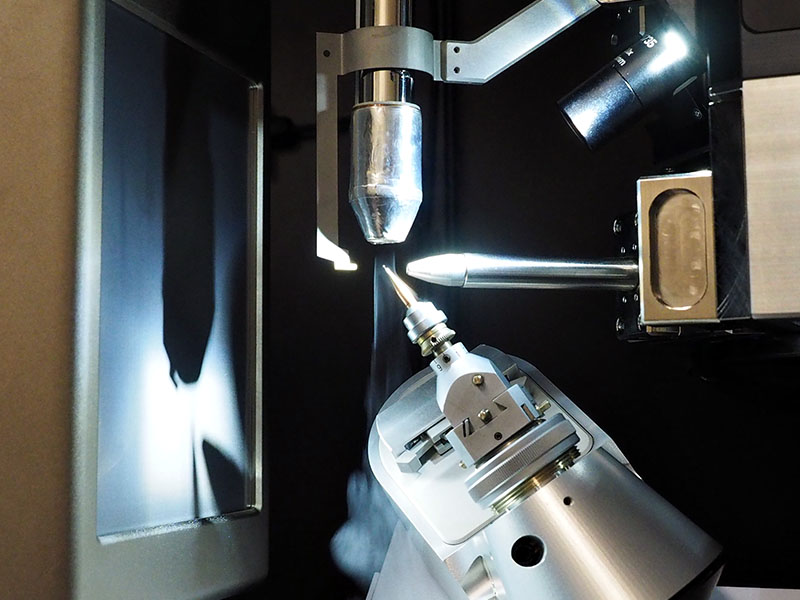
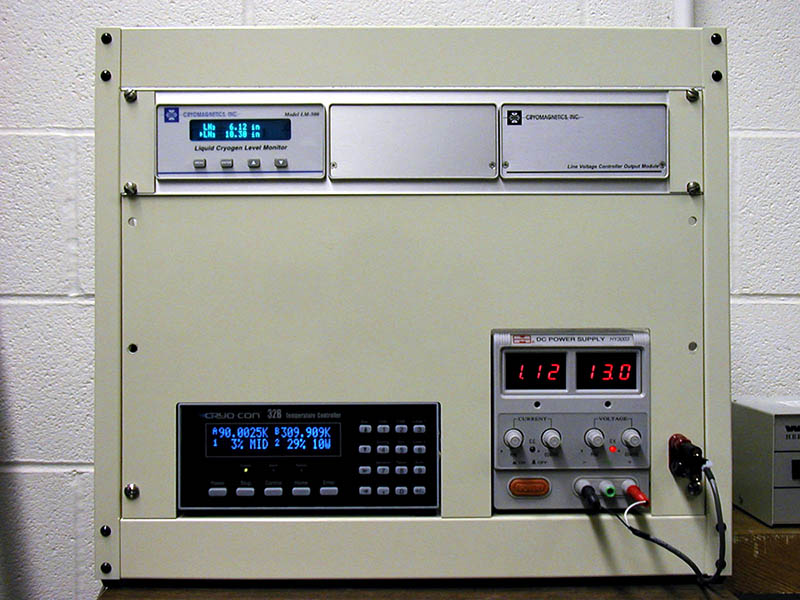
Stereomicroscopes are essential in any well-equipped X-ray crystallography laboratory. We have two main microscopes: Olympus models SZX12 and SZX9. The SZX12 has a custom made low-profile light source, for both transmitted and reflected light. The SZX9, which is usually housed in the Director's office, has a modified Olympus ILL-D base, again allowing both reflected and transmitted light. Both scopes have easily interchangeable polarizers and filters. Additional objectives and higher-power eyepiece lenses aid in crystal selection and microsurgery for tiny crystals. Precise, rotating stages are a necessity for crystal inspection. The stage used on the SZX12 (below, first) is an old Supper film-measuring device. It is large, flat, easily positioned, and demonstrably superior to ordinary rotary microscope stages. The SZX9 stage was custom made in the Chem-Phys machine shop.
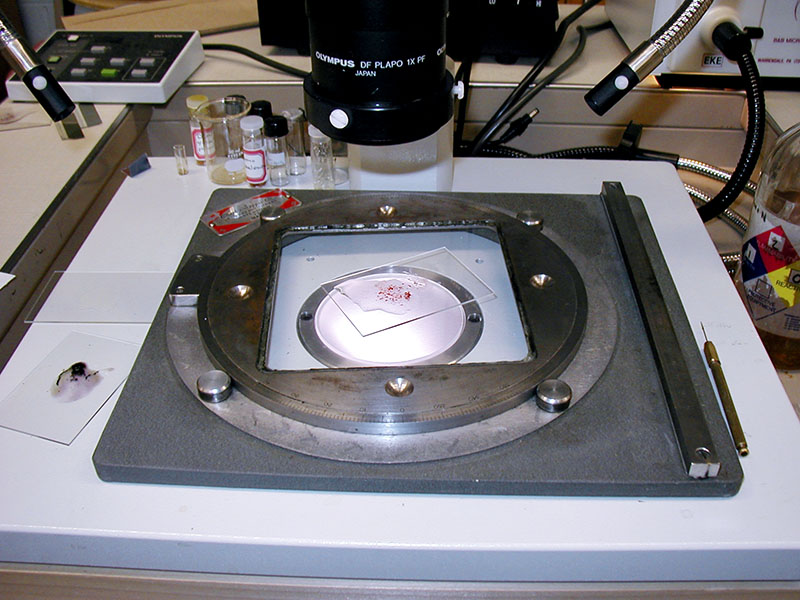
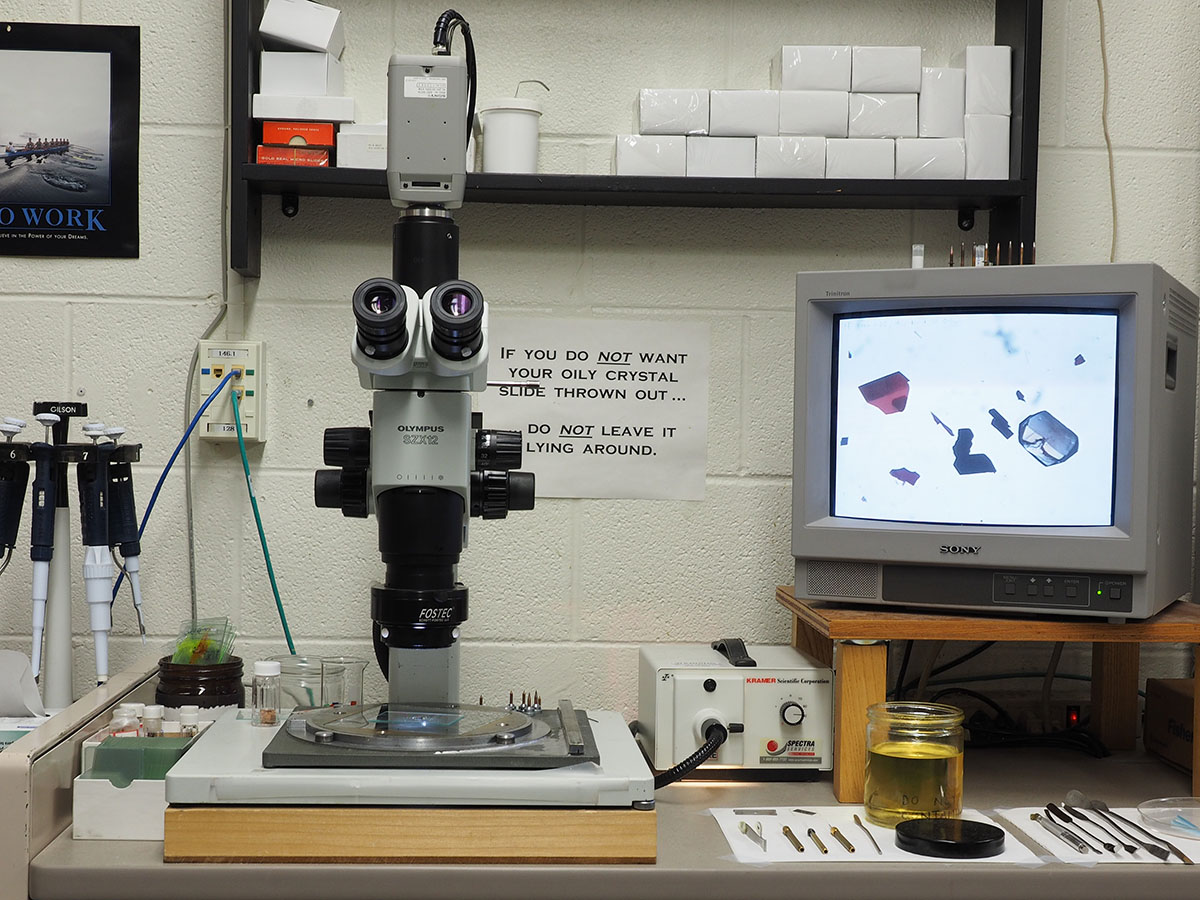
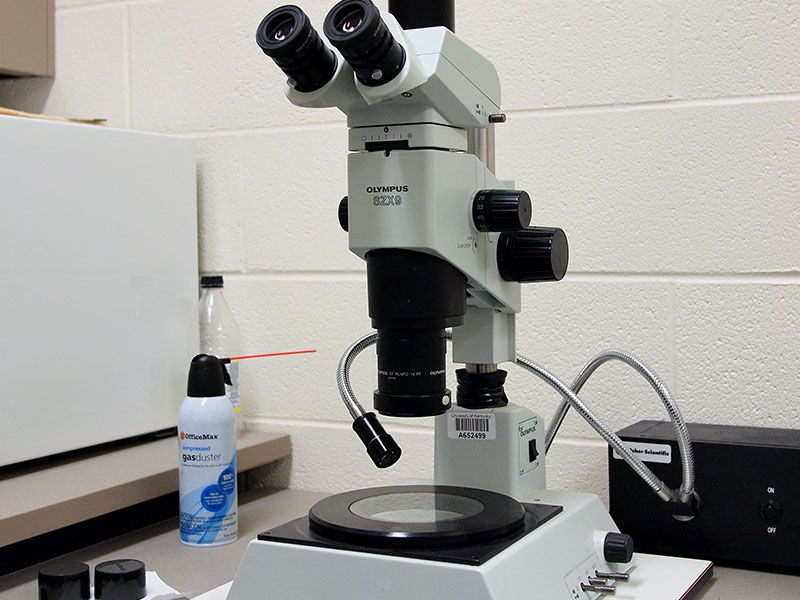
The video camera (above middle) is invaluable in teaching crystal handling techniques. For still pictures, high-resolution digital cameras attached to the microscopes allow pictures like these:
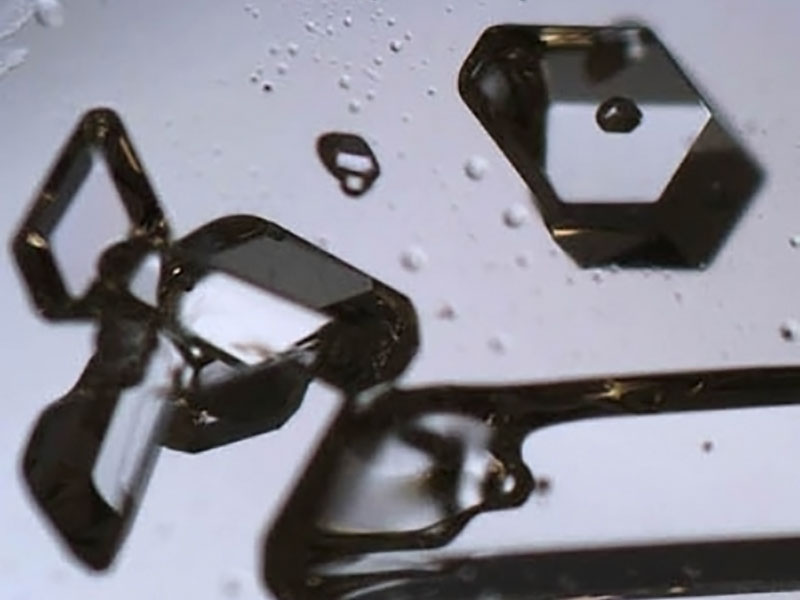
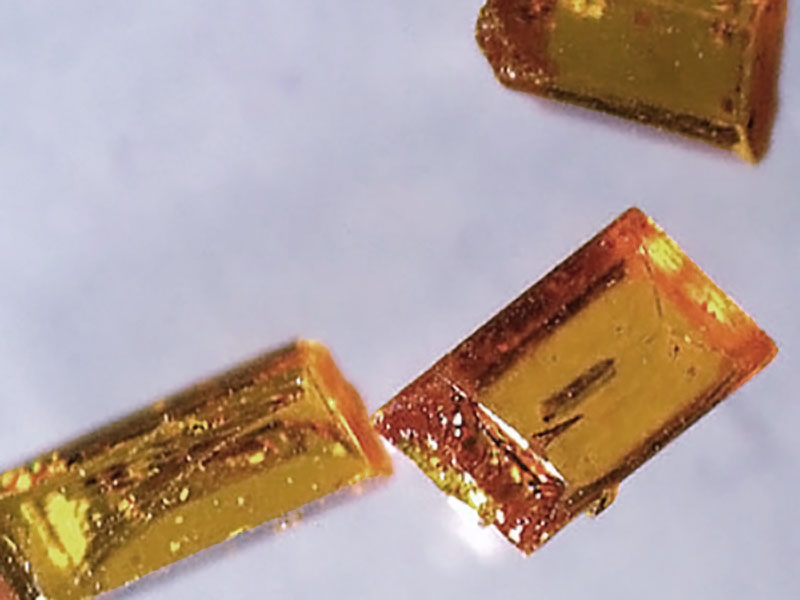
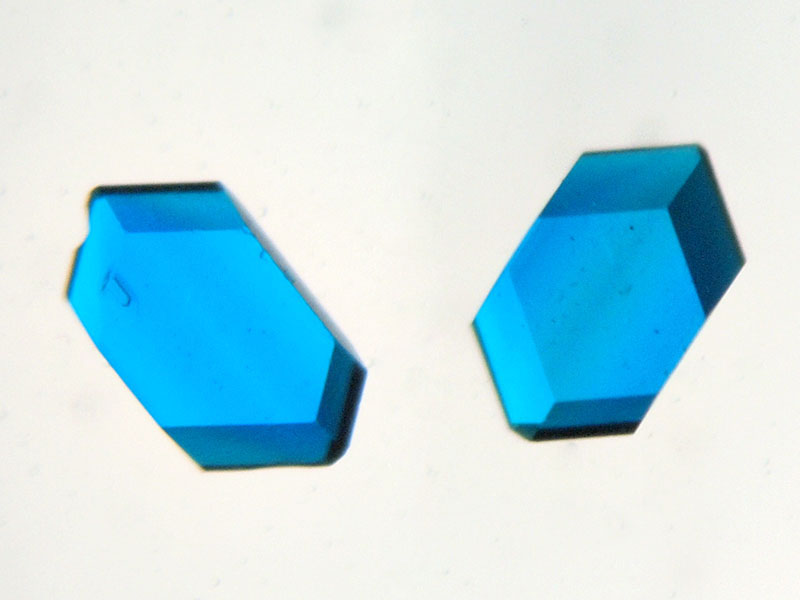
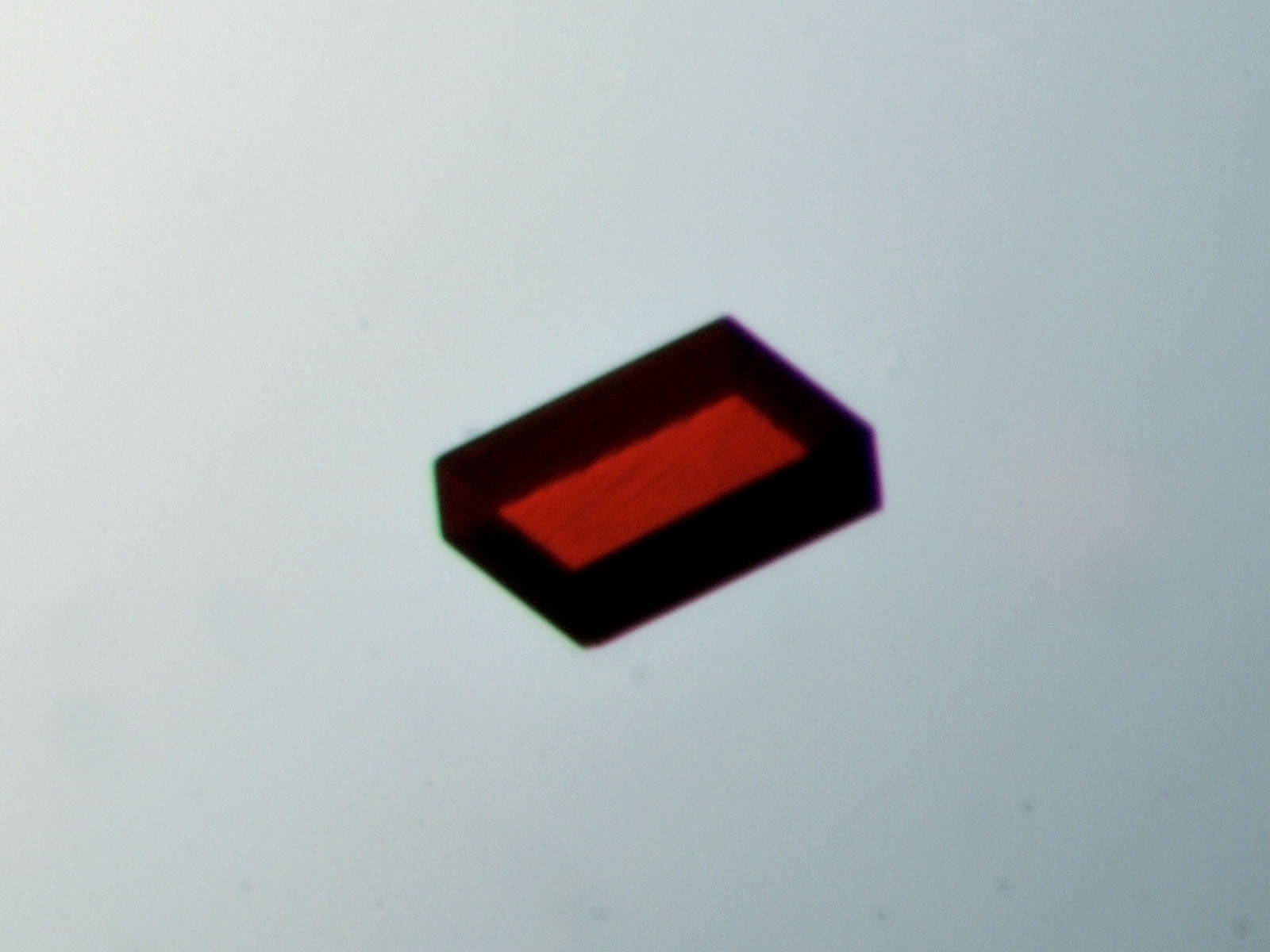
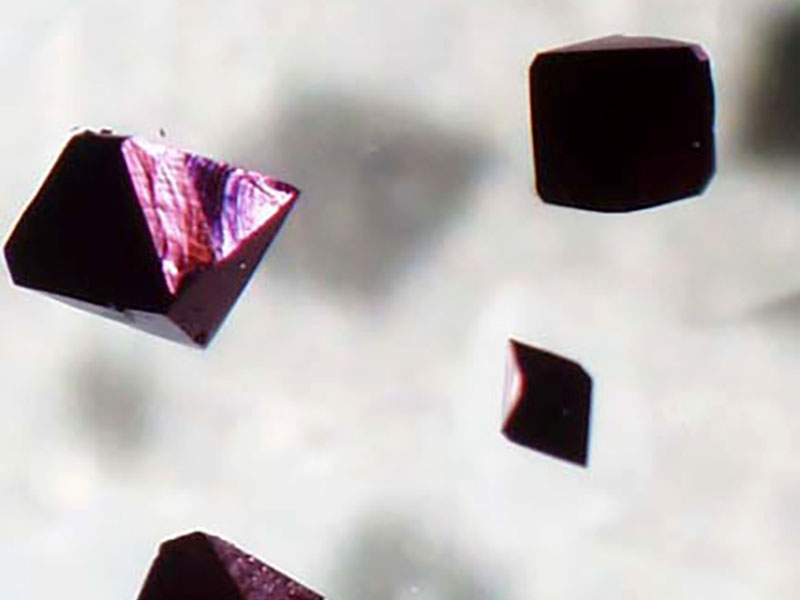
The facility is well equipped for computation, with a half dozen or so Linux and Macintosh computers for data collection, structure solution, refinement, and for the Cambridge Structure Database. We even have a couple of Windows boxes, which are inaccessible from the outside world to prevent them causing or sustaining damage.
